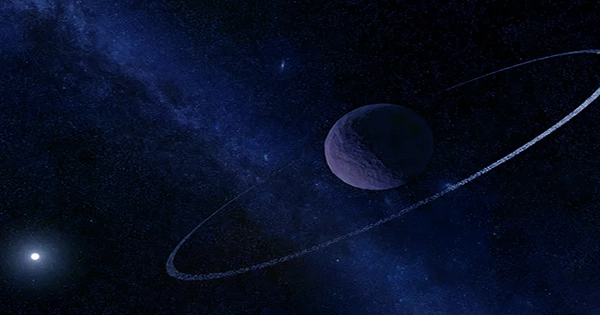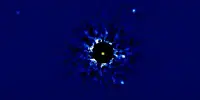A huge multinational team of astronomers has identified a second ring around the minor planet Quaoar. The scientists discovered the second ring while researching the first known ring in their study, which was approved for publication in the journal Astronomy & Astrophysics.
Quaoar is a Kuiper belt dwarf planet. It was discovered in 2002 by astronomers Michael Brown and Chad Trujillo. Since then, studies have revealed that it is approximately 1,110 km in diameter or roughly half the size of Pluto. It also possesses water ice on its surface and evidence of cryovolcanism, according to researchers. There is also a little moon named Weywot. Native American legendary characters inspired the names of both the planet and its moon.
A ring was found orbiting Quaoar in February of this year, calling into doubt beliefs about how ring systems and moons develop. The study team discovered a second ring in their fresh endeavor.

Both rings are larger than the Roche limit, which contradicts theories about how moons and rings form. Previously, experts assumed that material within the Roche limit would be driven apart by tidal forces, resulting in the formation of a ring. According to theory, material beyond the Roche limit should condense and create a moon. It is uncertain why this is not the case with Quaoar, which has caused some to distrust such hypotheses. Others believe the rings formed as a result of Weywot’s location.
Neither of the two rings can be seen with a normal telescope; they were discovered indirectly when Quaoar occurred to pass across the light from distant stars behind it. Last February, a specific dimming of the starlight revealed the presence of a single ring. When a recent occultation happened, scientists were prepared and focused their equipment on the planet and its newly discovered ring. They were able to learn more about both; for example, they discovered that the ring contains a dense core that is only a few miles across. During future occultations, they intend to investigate the second ring.
















